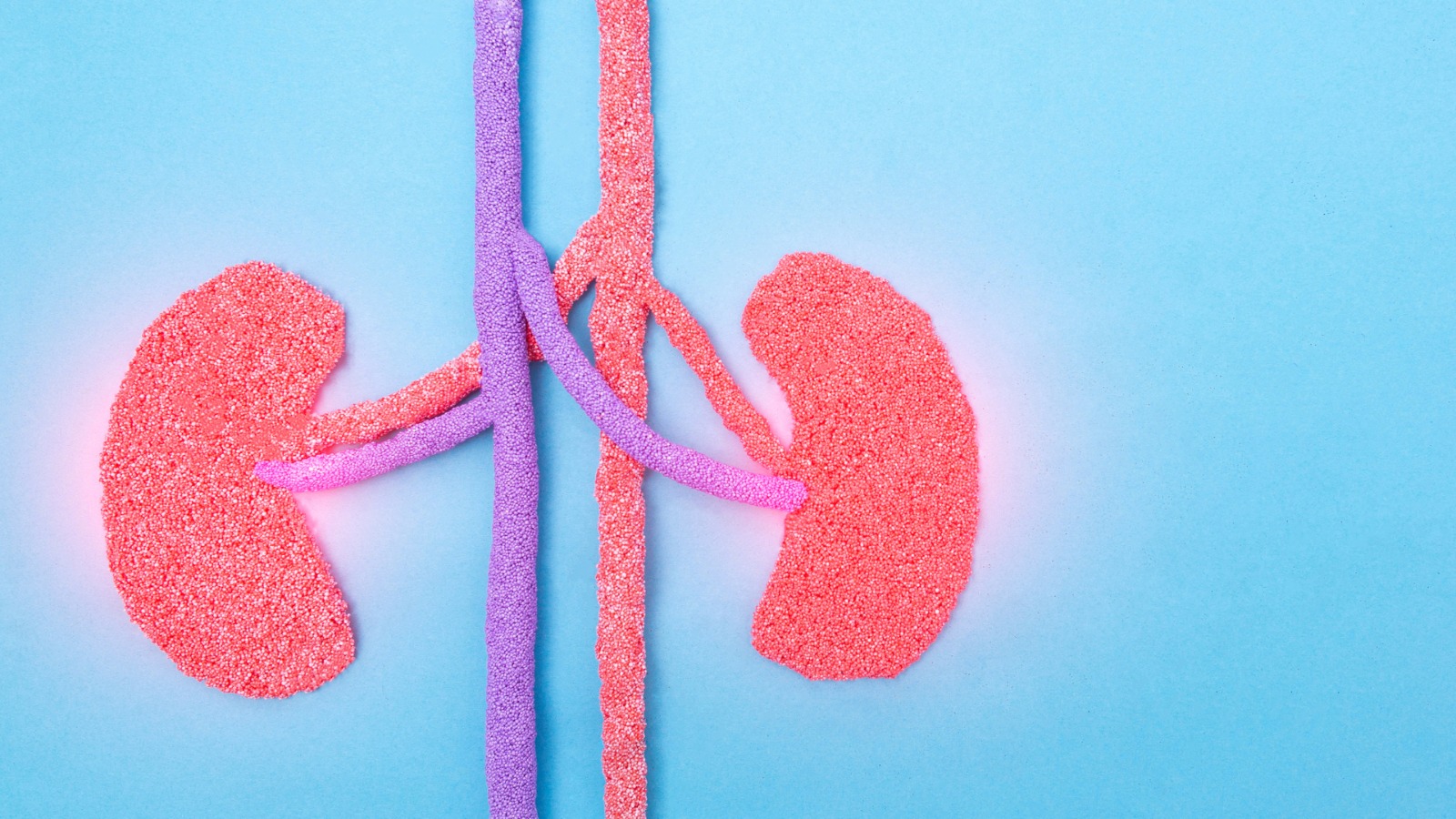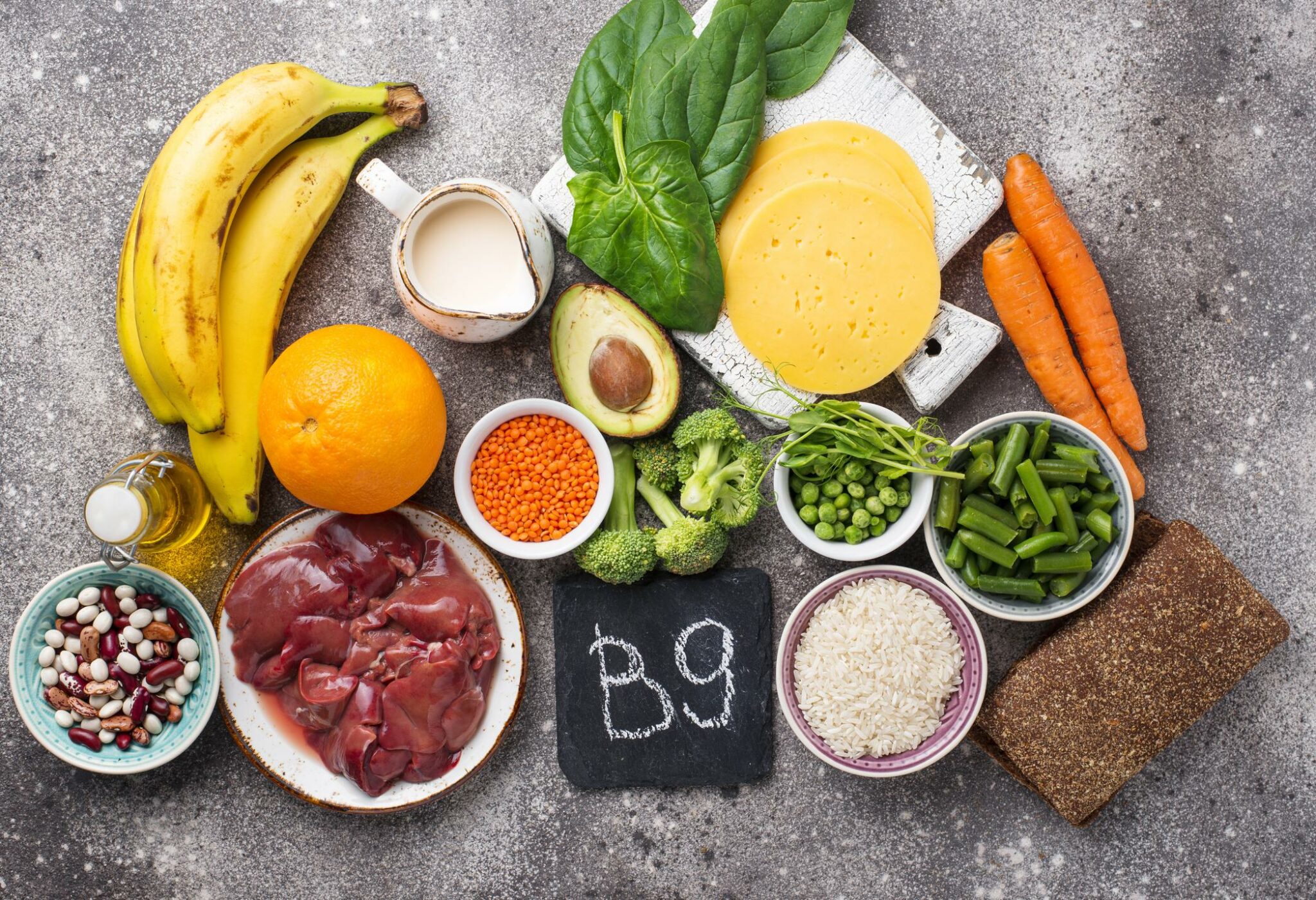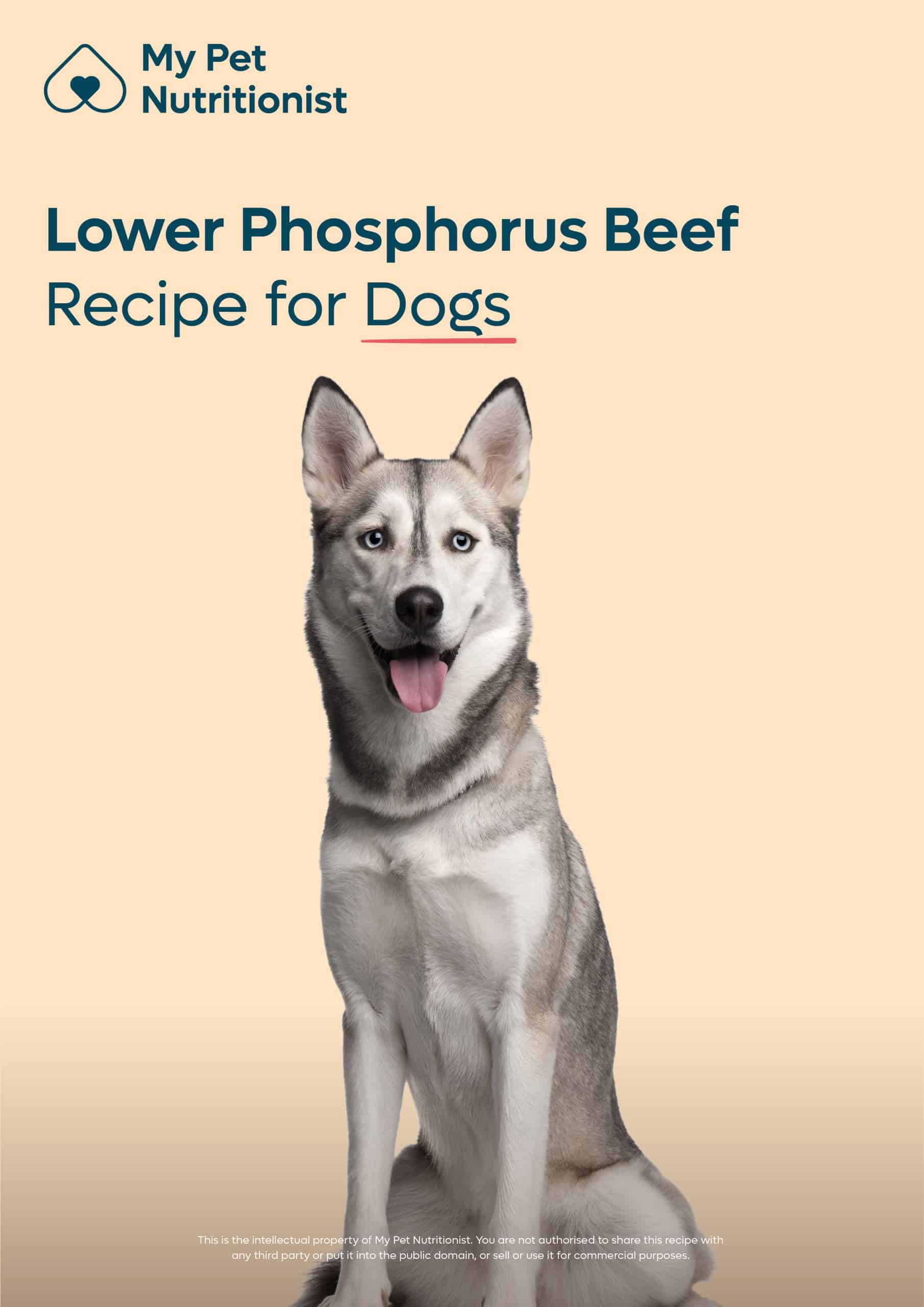-
£19.99

Kidney Diet: Low Phosphorous Vs Low Protein
- September 28, 2023
- 4 mins 15 secs
Kidney disease is a common issue we see here at My Pet Nutritionist. In the dog world, there is a lot of confusion over what the diet of a dog with kidney disease should consist of, and if it should be low in phosphorous, or low in protein. We are here to help clear up the confusion!
We don’t want phosphorous to flood the bloodstream , so many vets with recommend a phosphorous binder, which is a drug designed to stop phosphorous from entering the bloodstream.
Due to raised blood pressure in those with CKD, blood pressure medication may be prescribed.
As a last resort, once all other medical avenues have been explored the vet may decide to perform kidney dialysis.
Where raw is a fantastic diet in general, we would recommend feeding a cooked diet in the event your dog is diagnosed with kidney disease, as cooking further reduces phosphorous.
To learn more about kidney disease, and how other lifestyle changes can help those with CKD, please read our blog here!
When the kidneys are damaged, they struggle to remove phosphorous from the blood. While phosphorous is an important nutrient for strong bones and teeth, as well as muscular recovery, in excessive amounts, it can affect bone health, and cardiovascular health.
Studies show that greater excretion of phosphorous in the urine reduces the risk of cardiovascular disease. When the kidneys are functioning as normal, excretion of phosphorous is very normal; but when the kidneys are not able to function as normal, urinary excretion of phosphorous reduces due to their inability to remove it from the bloodstream, which leads to a greater risk of cardiovascular disease.
Findings Here
When looking at bone and tooth health, we need to consider the calcium-phosphorous ratio. When these are balanced properly, they work together to form strong bones and teeth, and help keep them in tip-top condition. Unfortunately, when there is an imbalance, and there is too much phosphorous in the body, calcium is pulled from the boned and teeth. Removing calcium from the bones and teeth causes them to become softer and weak.
Findings Here
Findings Here
Not only does the amount of protein consumed affect the kidneys, but also the type, and quality of protein. Some of the best options for a protein for those suffering from kidney disease include beef, tripe, chicken, eggs, and fish.
It’s very important to feed a diet still containing protein, however. Feeding too little can cause muscle wastage, slower healing from injury, cognitive inabilities, and slower metabolism. Aim to feed a low-moderate amount of protein, as part of a balanced recipe for kidney disease patients.
Findings Here
Findings Here
If your dog has kidney disease, especially in the later stages, we would highly recommend booking in with one of our team for a consultation to help keep your dog comfortable for as long as possible. Don’t forget to check out our fantastic recipes aimed at those suffering with kidney disease; they’re balanced to FEDIAF, and made only from wholefoods.
Team MPN x
A Bit About Kidney Disease…
Chronic Kidney Disease, abbreviated to CKD, happens in 4 stages. In order to understand the need for lower phosphorous and protein, we need to take a little look into the four stages.Stage 1
At this stage, there is no build up of toxins in the bloodstream, unlike in later stages. With often normal blood and urinalysis results, dogs with stage 1 kidney disease often have no clinical symptoms. This makes it very difficult to diagnose early on.Stage 2
During stage 2, toxins begin to build in the blood, and the kidneys begin to lose their function. When the kidneys begin to decline, they often begin to leak protein into the urine, which would give a higher protein reading in a urinalysis than is expected of a healthy individual. Blood pressure in these individuals may rise, but otherwise, clinical symptoms are rare at this stage.Stage 3
Once the diseased has progressed to stage 3, clinical symptoms are common, and include excessive drinking and urination. Following urinalysis, protein levels will be much higher, and blood pressure will further increase.Stage 4
Due to the degradation of the kidneys at stage 4, both protein and creatinine levels are high. Protein levels in the urine become incredibly high, and the blood pressure would be very high.Conventional treatments
Upon diagnosis of CKD, your veterinarian may wish to flush the kidneys – this aims to remove toxins. This can help resume normal kidney function, but may not work for all dogs. A lower protein and phosphorous diet will likely be recommended. This diet should not be acidic either!We don’t want phosphorous to flood the bloodstream , so many vets with recommend a phosphorous binder, which is a drug designed to stop phosphorous from entering the bloodstream.
Due to raised blood pressure in those with CKD, blood pressure medication may be prescribed.
As a last resort, once all other medical avenues have been explored the vet may decide to perform kidney dialysis.
What Type of Food Should We Feed
Your vet will likely recommend a ‘prescription’ renal diet. These come in both wet and dry variations. Wet or fresh food contains 65-75% moisture, and dry food only contains 8-10% moisture. With the level of dehydration when feeding dry food, it can impact the kidneys further, and is not something we recommend. If using a veterinary diet, it may be a better option to go for the wet version. With this in mind, a fresh diet, tailored to suit a dog with kidney disease, would be the absolute best option. A balanced recipe, with low phosphorous and low-medium protein, would be ideal. We have two fantastic balanced recipes, ideal for those suffering with kidney disease in stages 1 and 2; one tripe based, and one beef based. For those with later stage kidney disease, a consultation is necessary.Where raw is a fantastic diet in general, we would recommend feeding a cooked diet in the event your dog is diagnosed with kidney disease, as cooking further reduces phosphorous.
To learn more about kidney disease, and how other lifestyle changes can help those with CKD, please read our blog here!
Why Should We Feed a Low Phosphorous Diet?
People often wonder what the link is between phosphorous and the kidneys, and therefore why it should be fed in very low quantities to dogs who have kidney disease.When the kidneys are damaged, they struggle to remove phosphorous from the blood. While phosphorous is an important nutrient for strong bones and teeth, as well as muscular recovery, in excessive amounts, it can affect bone health, and cardiovascular health.
Studies show that greater excretion of phosphorous in the urine reduces the risk of cardiovascular disease. When the kidneys are functioning as normal, excretion of phosphorous is very normal; but when the kidneys are not able to function as normal, urinary excretion of phosphorous reduces due to their inability to remove it from the bloodstream, which leads to a greater risk of cardiovascular disease.
Findings Here
When looking at bone and tooth health, we need to consider the calcium-phosphorous ratio. When these are balanced properly, they work together to form strong bones and teeth, and help keep them in tip-top condition. Unfortunately, when there is an imbalance, and there is too much phosphorous in the body, calcium is pulled from the boned and teeth. Removing calcium from the bones and teeth causes them to become softer and weak.
Findings Here
Findings Here
Why Should We Feed a Low Protein Diet?
As previously mentioned, one of the main symptoms of kidney disease, is having high protein levels in urine. Studies show that high protein intake can be linked to proteinuria; protein in the urine. When a dog has low functioning kidneys, consumption of protein in ‘normal’ amounts causes immense stress and pressure on the kidneys, which then adds to the build-up of toxins in the blood.Not only does the amount of protein consumed affect the kidneys, but also the type, and quality of protein. Some of the best options for a protein for those suffering from kidney disease include beef, tripe, chicken, eggs, and fish.
It’s very important to feed a diet still containing protein, however. Feeding too little can cause muscle wastage, slower healing from injury, cognitive inabilities, and slower metabolism. Aim to feed a low-moderate amount of protein, as part of a balanced recipe for kidney disease patients.
Findings Here
Findings Here
If your dog has kidney disease, especially in the later stages, we would highly recommend booking in with one of our team for a consultation to help keep your dog comfortable for as long as possible. Don’t forget to check out our fantastic recipes aimed at those suffering with kidney disease; they’re balanced to FEDIAF, and made only from wholefoods.
Team MPN x
Customer Reviews
Explore related products
Explore Related Products
Related articles

Dietary NeedsDisease ManagementKidney DiseaseKidney Health
Kidney Diet: Low Phosphorous Vs Low Protein
Sep 28 2023
•
4 mins 15 secs

Dietary NeedsDisease ManagementKidney DiseaseKidney Health
Everything you Need to Know About Cushing’s Disease
May 12 2023
•
8 mins 40 secs

Dietary NeedsDisease ManagementKidney DiseaseKidney Health
The Ultimate Guide to Urinary Stones
Mar 22 2023
•
7 mins 46 secs

Dietary NeedsDisease ManagementKidney DiseaseKidney Health
What Do My Pet’s Kidneys Do?
Feb 22 2022
•
4 mins 28 secs

Dietary NeedsDisease ManagementKidney DiseaseKidney Health
Our Top Nutrients for General Kidney Health
Oct 06 2021
•
5 mins 56 secs

Dietary NeedsDisease ManagementKidney DiseaseKidney Health
The Problem with Purines
Jul 06 2021
•
6 min read

Dietary NeedsDisease ManagementKidney DiseaseKidney Health
Why Does My Dog Need Folate
Jun 30 2021
•
5 min read
✕







